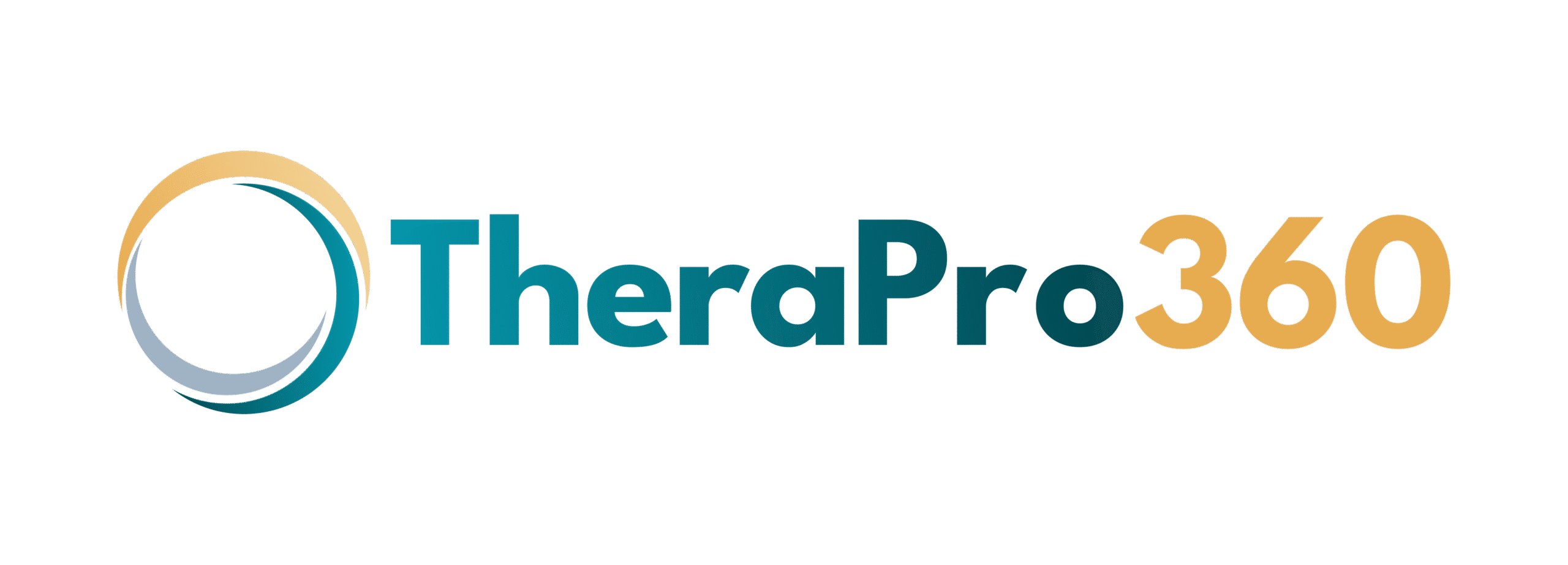
Blog
What Is Customer Data Management in Healthcare Marketing?
Expert web designers ensure the site and software is easy to use.What Is Customer Data Management in Healthcare Marketing?
Customer data management (CDM) forms the backbone of effective healthcare marketing. At its core, CDM is all about collecting, storing, organizing, and utilizing data in ways that create meaningful connections and drive impactful patient outcomes. With healthcare marketing increasingly relying on personalization and data-driven strategies, mastering this practice has become critical for clinics, hospitals, and healthcare providers.
But what exactly is customer data management, why is it so important in healthcare marketing, and how can you implement it effectively? This guide unpacks these questions and provides actionable strategies to optimize data use for better patient engagement and practice growth.
Physical Therapy Marketing & SEO: A Guide to Managing Customer Data for Growth
How to Build a Physical Therapy Website That Ranks and Converts
Best Keywords for Physical Therapy SEO (With Examples)
Local SEO for Physical Therapists: How to Dominate in Your Area

What Is Customer Data Management (CDM)?
Customer Data Management (CDM) refers to the process of collecting, analyzing, and utilizing customer information to inform business decisions, improve communication, and enhance services. For healthcare, this includes managing patient demographics, medical histories, appointment schedules, and engagement preferences—all in compliance with strict privacy and security regulations.
The Key Components of CDM in Healthcare
Customer data in healthcare marketing often consists of:
- Demographics: Age, location, gender, and other general data points that help segment audiences.
- Behavioral Data: Information on patient habits, preferences, and engagement with marketing efforts.
- Clinical Data: Healthcare-specific insights, such as appointment histories and treatment plans.
- Feedback: Patient satisfaction surveys, reviews, and other commentary that guide improvements.
The purpose of CDM is not just about storing data—it’s about organizing and activating it in ways that benefit patients while achieving marketing goals.
Example:
A physical therapy clinic might collect patient feedback from surveys, identify trends in preferred services, and use that data to create targeted campaigns promoting those services specifically to patients in similar categories.
What Is Customer Data Management in Healthcare Marketing?
Best CRM Tools and Customer Database Management Software for Small Practices
How to Collect, Store, and Use Patient Data Ethically and Effectively

Why Is Customer Data Management Critical in Healthcare Marketing?
The healthcare industry is unique in its need to balance professional service delivery with personal patient engagement. Poorly managed data can lead to inefficiencies in operations, misguided marketing campaigns, and even loss of trust. Effective data management ensures both compliance and patient satisfaction while helping providers stay competitive.
1. Personalized Patient Engagement
Modern patients expect tailored healthcare experiences. When clinics or hospitals use CDM effectively, they can create personalized email campaigns, recommend relevant health and wellness content, or even provide reminders for services specific to a patient’s health needs. Personalization like this helps patients feel seen, valued, and understood.
2. Streamlining Communication
Consistent data management allows healthcare providers to centralize patient interactions. From appointment reminders to post-treatment follow-ups, organizing this data ensures patients receive timely, accurate, and relevant communication without duplication or error.
3. Building Trust and Loyalty
When patients know their healthcare provider is using accurate, well-protected data to inform their care, it builds confidence in the practice. CDM also encourages repeat visits by enabling providers to identify and address patient needs proactively.
4. Optimized Marketing Performance
CDM allows clinics to analyze which campaigns resonate with specific patient segments. For example, a campaign promoting post-surgical rehabilitation might engage more effectively with patients recently discharged from surgery, as identified in historical treatment data. Over time, this analysis enables smarter campaign decisions, reduced costs, and better ROI.
5. Compliance and Security
Regulatory frameworks like HIPAA (Health Insurance Portability and Accountability Act) impose strict requirements on how healthcare providers manage patient information. Proper customer data management ensures data privacy while positioning the practice as a trustworthy provider.
Key Takeaway:
CDM serves as both a marketing enabler and a service enhancer, creating seamless patient experiences while driving measurable engagement and ROI.
Choosing the Right Practice Management and CRM Tools for Your PT Clinic
How to Track ROI on Physical Therapy Marketing & SEO
Email Marketing for Physical Therapists: How to Stay Top of Mind

Actionable Strategies for Effective Customer Data Management in Healthcare
While the value of data is clear, the challenge lies in managing it efficiently and ethically. Without robust systems and strategies, data management can quickly become overwhelming. Below are evidence-backed strategies to help healthcare providers implement and optimize their CDM practices.
1. Centralize Your Data with the Right Tools
Opt for powerful, healthcare-specific software that consolidates all patient and marketing data in one place. An integrated CRM (Customer Relationship Management) system designed for healthcare ensures seamless access to real-time data while maintaining consistency.
Features to Look For in Healthcare CDM Tools:
- Comprehensive patient profiles that store demographic, medical, and engagement data.
- Built-in automation for tasks like sending appointment reminders or follow-up surveys.
- Data segmentation tools for creating targeted campaigns.
- HIPAA-compliant encryption and storage practices.
For physical therapy practices, tools like WebPT or Kareo combine patient management and marketing functions, providing a seamless experience for both providers and patients.
2. Segment Patients for Targeted Marketing
Segmentation involves categorizing your patient data into groups based on shared attributes or behaviors. This strategy makes marketing campaigns more effective because they become highly focused and relevant to specific audiences.
Example Segmentation Ideas for Healthcare Marketing:
- By Age Group: Promote senior care services to older patients or pediatric rehab for younger demographics.
- By Treatment History: Send targeted emails about post-injury recovery programs to patients who recently completed similar treatments.
- By Behavioral Patterns: Identify patients who regularly attend community health programs and send them wellness event invitations.
Targeted communications not only improve patient engagement but also maximize the efficiency of marketing spend.
3. Leverage Data Analytics for Smarter Decisions
Analytics tools can help identify trends and assess data’s impact on marketing efforts. Platforms like Google Analytics, combined with patient engagement metrics, provide detailed insights into which marketing activities are driving patient appointments or inquiries.
Key Metrics to Monitor:
- Website traffic trends by source (e.g., organic search, email campaigns).
- Conversion rates from marketing emails to appointment bookings.
- Patterns of lapsed patients who might need reactivation emails.
Real-time analytics ensure your campaigns remain agile and adaptive.
4. Ensure Data Accuracy and Consistency
One of the most common challenges in CDM is managing inconsistent or outdated information, which can lead to inaccuracies in marketing efforts.
Recommended Solutions:
- Regular Audits: Schedule quarterly check-ups of your patient database to remove outdated contact information or duplicate records.
- Automated Updates: Use CRM systems with features that flag incomplete or inconsistent data entries.
- Training Staff: Empower your team to understand the importance of accurate data entry and maintenance.
Accurate data ensures your campaigns reach the right people at the right time.
5. Maintain Compliance with Data Privacy Laws
Patients must trust that their data is handled responsibly. Ensure your systems meet all relevant regulations, including international compliance standards like GDPR (for global practices) and HIPAA.
Tips for Ensuring Compliance:
- Select software providers that guarantee HIPAA-compliant security protocols.
- Limit access to sensitive patient data based on staff roles and responsibilities.
- Use secure methods for collecting and storing data, such as encrypted intake forms.
Always communicate your commitment to patient privacy through a detailed, transparent privacy policy.
6. Use Automation to Enhance Efficiency
Automation can save time while delivering consistent results. From appointment reminders to personalized follow-up emails, automation ensures patients feel supported at every stage of their healthcare journey.
Example Strategies:
- Automated Email Sequences: Send a welcome series for new patients or progress milestone reminders for ongoing treatments.
- Trigger-based Messages: Set up automatic messages based on actions like a patient missing an appointment or completing their therapy plan.
When used effectively, automation enhances patient engagement and reduces manual workload for your team.
Top Physical Therapy Marketing Mistakes to Avoid (And What to Do Instead)
Patient Reviews and Reputation Management for PT Clinics
Social Media Marketing for Physical Therapists: A Strategic Guide

Final Thoughts
Customer data management is not just a back-end operational task—it’s a strategic advantage that can transform how healthcare providers engage with patients and drive business growth. By centralizing your data, leveraging smart tools, and adhering to regulatory guidelines, your clinic can foster stronger patient relationships, personalize care, and optimize marketing outcomes.
Start small by auditing your current data management processes today and identifying gaps. From there, implement robust CRM solutions, introduce automation, and commit to maintaining data accuracy and compliance. An investment in CDM will pay dividends as technology continues shaping personalized patient journeys in healthcare marketing.
Why TheraPro360?
Run your practice with simplicity with our streamlined scheduling, seamless telehealth integration, centralized patient portals, intuitive calendar management, and automated invoicing.
Get Started TodayAuthors and Contributors

Eva Lassey PT, DPT
Co-Founder of TheraPro360
Dr. Eva Lassey PT, DPT has honed her expertise in developing patient-centered care plans that optimize recovery and enhance overall well-being. Her passion for innovative therapeutic solutions led her to establish DrSensory, a comprehensive resource for therapy-related diagnoses and services.

Irina Shvaya
Co-Founder of TheraPro360
Irina Shvaya is the Founder of eSEOspace, a Software Development Company. She combines her knowledge of Behavioral Neuroscience and Psychology to understand how consumers think and behave.
Contents

Build Your Therapy Practice Online With a Website That Actually Works
At TheraPro360, we’re more than just software — we’re your all-in-one partner for practice management and online growth. From custom websites to SEO and marketing, we help therapists modernize their online presence and attract more patients.
Whether you're starting fresh or your current site needs a serious upgrade, our streamlined, white-glove process takes the stress out of getting results — so you can focus on what matters most: your patients.
Ready to Grow Your Practice?
👉 Schedule Your Free Discovery Call Now
Let’s build your online presence — together.













